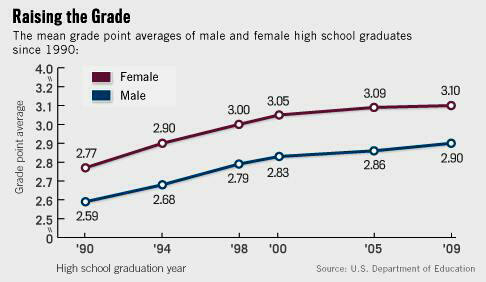— ‘SAT reading scores hit a four-decade low’ (Washington Post)
Reading scores on the SAT for the high school class of 2012 reached a four-decade low, putting a punctuation mark on a gradual decline in the ability of college-bound teens to read passages and answer questions about sentence structure, vocabulary and meaning on the college entrance exam.
Many experts attribute the continued decline to record numbers of students taking the test, including about one-quarter from low-income backgrounds. There are many factors that can affect how well a student scores on the SAT, but few are as strongly correlated as family income.
Scores among every racial group except for those of Asian descent declined from 2006 levels. A majority of test takers — 57 percent — did not score high enough to indicate likely success in college, according to the College Board, the organization that administers the test.
…
— Critics charge that there is a ‘Research War on Affirmative Action’ (Inside Higher Ed)
Several studies presented Friday at the Brookings Institution suggested that eliminating the consideration of race would not have as dramatic an effect on minority students as some believe, and that the beneficiaries of affirmative action may in fact achieve less academic success than they would otherwise. The studies were criticized by some present for being one-sided.
Criticism was aimed at two studies with controversial conclusions:
- There seems to be no “chilling effect” as a result of doing away with affirmative action. The yield rate for minority students who were admitted based on “race-neutral” standards actually increased after the affirmative action ban took effect.
- Strong evidence was presented for the harmful effects of affirmative action “mismatch” – the idea “that minority students who are admitted to better institutions because of affirmative action may end up with lower academic achievement as a result”.
The Supreme Court will begin hearing the affirmative action case of Fisher v. University of Texas at Austin this month.
…
— ACT now more popular than the SAT (Boston.com)
…
— ‘Pack More in a Day By Matching Tasks To the Body’s Energy’ (WSJ)
A growing body of research suggests that paying attention to the body clock, and its effects on energy and alertness, can help pinpoint the different times of day when most of us perform our best at specific tasks, from resolving conflicts to thinking creatively.
This is definitely true for me:
When it comes to doing cognitive work, for example, most adults perform best in the late morning, says Dr. Kay. As body temperature starts to rise just before awakening in the morning and continues to increase through midday, working memory, alertness and concentration gradually improve. Taking a warm morning shower can jump-start the process.
…
— ‘Why It’s Bad That Smartphones Have Banished Boredom’ (Slashdot)
For one thing, we talk less with people while standing in line.
…
— Women continue to earn the majority of advanced degrees, but this is apparently not viewed as a problem
Professor Mark J. Perry sees a problem.
… But don’t expect any concern about the fact that men have increasingly become the second sex in higher education. The concern about gender imbalances will remain extremely selective, and will only focus on cases when women, not men, are underrepresented.



